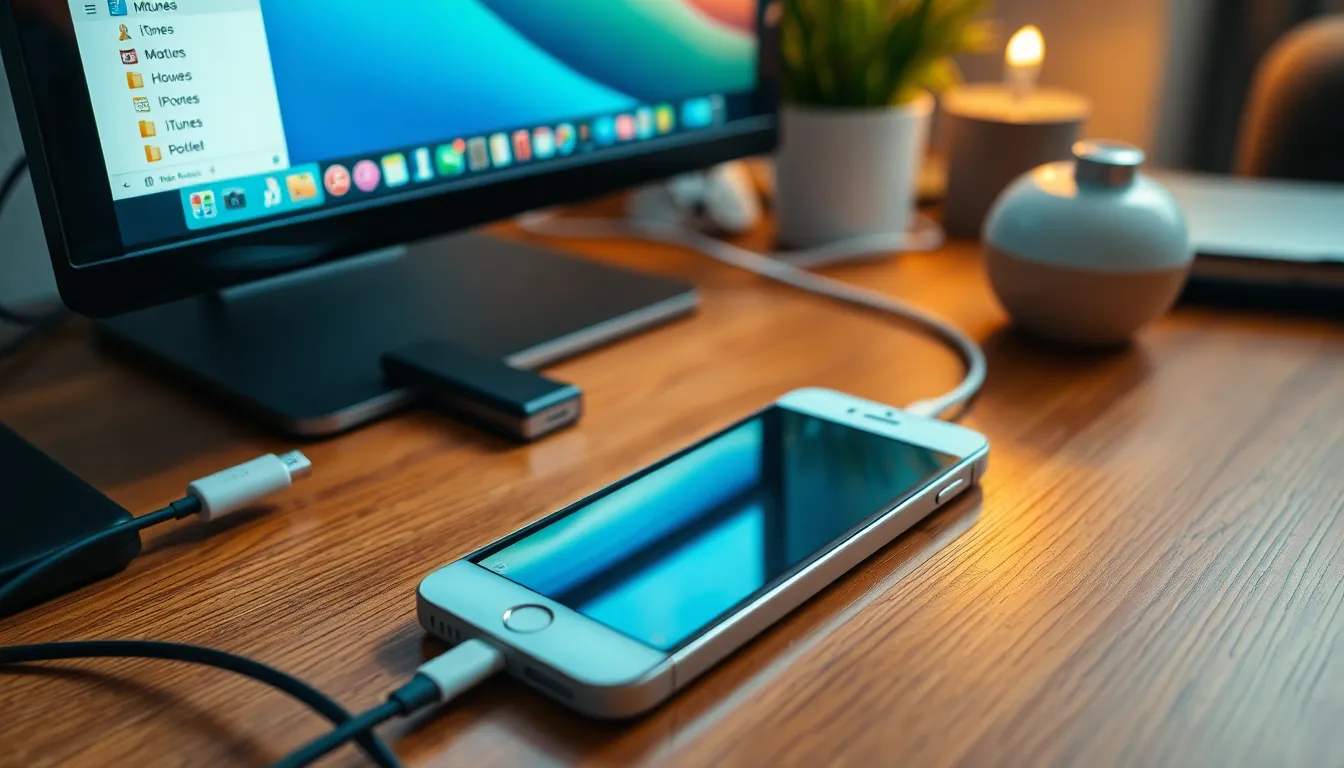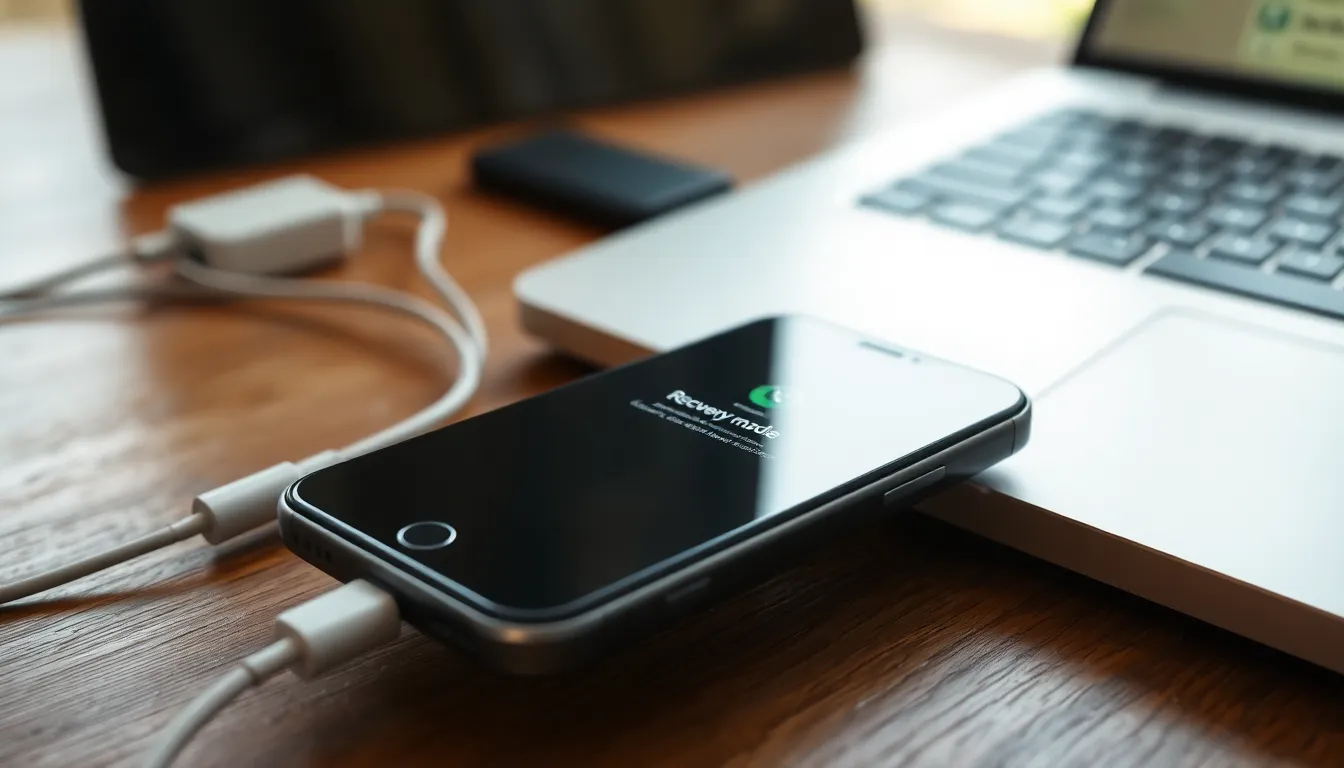Staring at an old iPhone that’s locked tighter than a vault? It’s a common dilemma. Whether it’s a forgotten passcode or a phone that’s seen better days, the frustration can be real. But fear not! Resetting that stubborn device doesn’t require a secret handshake or a tech wizard.
Table of Contents
ToggleUnderstanding the Need to Reset an Old iPhone
Resetting an old iPhone serves several purposes. Many users encounter performance issues, making the device slow and unresponsive. Frequent app crashes and reduced battery life also prompt some to consider a reset.
Privacy concerns emerge when selling or gifting the device, as personal data needs protection. Having complete control over the device’s settings helps users ensure their data remains secure. Additionally, resetting eliminates software glitches and restores factory settings, often improving overall functionality.
Many opt for this process when upgrading their devices. Transitioning to a newer model can be less stressful if the previous phone is reset to factory defaults. Owners of old iPhones might feel the need to remove their data, especially if they switch between different operating systems.
Occasionally, an iPhone locked due to a forgotten passcode may necessitate a reset. Attempting multiple passcode entries can lead to device lockout, enhancing the importance of this action. Understanding these factors can simplify the decision to reset an old iPhone, making the procedure more justified and systematic.
Successful resets remove all personal information completely, ensuring the next user experiences a clean slate. Common issues such as connectivity problems or software bugs often resolve post-reset. Knowing how to execute this process is vital for anyone facing difficulties with their device.
Methods to Reset an Old iPhone Without Passcode

Resetting an old iPhone without a passcode can be accomplished through several methods. Each method requires specific tools or conditions to be effective.
Using iTunes
Using iTunes provides a straightforward way to reset an old iPhone. Connect the device to a computer with iTunes installed. Next, place the iPhone into recovery mode, then select the device icon in iTunes. Click on “Restore iPhone.” A prompt will appear confirming the action. After confirming, iTunes will download the latest software and reset the phone to factory settings.
Using Finder
Using Finder is an alternative for those with macOS Catalina or newer. First, connect the iPhone to the Mac using a USB cable. Open Finder, then locate the device under “Locations.” Put the iPhone into recovery mode next. Select “Restore iPhone” in the Finder window. A prompt will confirm the action, allowing you to proceed with the reset process.
Using Recovery Mode
Using recovery mode can reset an old iPhone without requiring the passcode. Start by connecting the device to a computer and opening iTunes or Finder. Follow the specific button presses for the iPhone model to enter recovery mode. Once in recovery mode, computers recognize the device. Selecting “Restore” from the on-screen options will initiate the reset process effectively.
Alternative Solutions
For those unable to reset their old iPhone using conventional methods, alternative solutions exist. These options provide effective ways to regain access to the device.
Using iCloud
iCloud offers a straightforward way to reset an old iPhone without needing a passcode. Before starting, the “Find My iPhone” feature must be enabled on the device. Users can log into their iCloud account on a computer, navigate to the “Find iPhone” section, and select their device from the list. By clicking on “Erase iPhone,” the device is reset remotely. The iPhone will erase all data and settings, allowing for a fresh start. This method ensures the removal of personal information, but it requires internet access.
Third-Party Software
Third-party software tools provide another method for resetting an old iPhone. Numerous options are available, such as Dr.Fone, Tenorshare UltData, and iMyFone LockWiper. Each program usually guides users through the reset process step-by-step. After connecting the device to a computer, the software will typically prompt users to access recovery mode. Once the software detects the device, clicking on the “Unlock” or “Reset” option initiates the process. It’s crucial to select reputable software to avoid potential security risks.
Precautions Before Resetting
Back up important data before proceeding with the reset. Users often store valuable contacts, photos, and documents on their devices. They can utilize iCloud or iTunes for creating backups to avoid data loss.
Ensure the device is charged to at least 50%. Low battery levels during the reset process can lead to complications. Keeping the iPhone plugged into a power source guarantees uninterrupted operation.
Check for ownership verification. In cases where the device is associated with an Apple ID, the owner must be prepared to enter credentials later. This step is essential for successfully completing the reset.
Verify if “Find My iPhone” is enabled. If active, users may need to disable this feature before resetting the device. Users should navigate to Settings, select their name, and check the device status.
Consider the reason for the reset. If the goal involves selling or gifting the iPhone, a complete wipe of personal information is crucial. Users should aim for a factory reset to ensure that no personal data remains accessible.
Assess the possibility of recovering the passcode. In some cases, remembering the passcode may be less complicated than performing a reset. Users facing difficulties might want to explore ways to retrieve their passcode first.
These precautions ensure a smooth resetting experience without unintended data loss or complications. Following these guidelines will foster a secure, successful reset of the old iPhone.
Resetting an old iPhone without a passcode is a manageable task that can breathe new life into the device. By following the outlined methods users can easily restore functionality and address issues that have arisen over time. Whether through iTunes, Finder, iCloud, or third-party software, there are multiple avenues to achieve a successful reset.
It’s crucial to take the necessary precautions beforehand to safeguard important data and ensure a smooth process. With the right approach users can confidently reset their iPhones and make informed decisions about their devices’ future. A fresh start not only enhances performance but also prepares the device for a new owner if needed.




